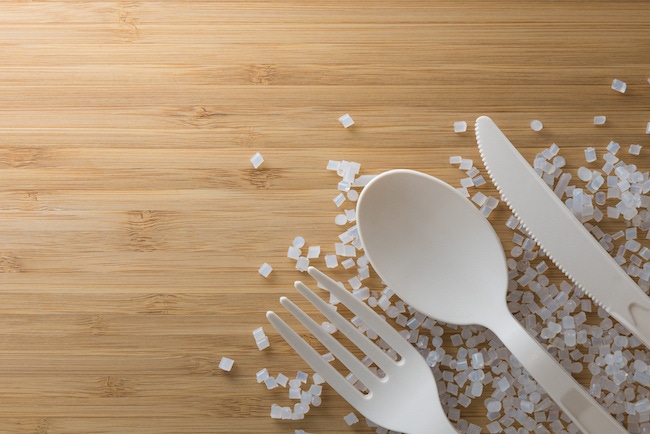UK researchers have shown that a chemical process using a zinc-based catalyst and methanol can break down consumer plastics and produce a biodegradable solvent with applications in cosmetic and pharmaceutical products.
May 21, 2020

Bioplastics have always been the fly in the ointment when it comes to recycling, as PET recyclers fear the inadvertent addition of polylactic acid (PLA) in the mix, which ruins the whole batch.
Today, scientist at the universities of Birmingham and Bath in Great Britain have announced the development of a chemical recycling method that not only speeds up the process but can convert the output into a biodegradable solvent that can be sold for use in variety of industries, including cosmetics and pharmaceuticals.
|
As bioplastics made from PLA are becoming more common in products such as single-use cups and containers, packaging materials, and even some children’s toys, end-of-life disposal is problematic. The plant-based material has to be disposed of in landfills or composted (if an industrial or commercial composting facility can be found that will take bioplastic materials), or left to biodegrade over a period of time that could be “up to several months,” said the information from the University of Birmingham.
In a new study, researchers have shown that a chemical process using a zinc-based catalyst developed at the University of Bath and methanol can break down real consumer plastics and produce a ��“green” solvent, called methyl lactate. Their results are published in the journal Industrial & Engineering Chemistry.
The team tested its method on three separate PLA products — a disposable cup, 3D-printer waste, and a children’s toy. They found the cup was most easily converted to methyl lactate at lower temperatures, but even the bulkier plastic in the children’s toy could be converted using higher temperatures. “We were excited to see that it was possible to obtain high quantities of the green solvent regardless of the samples’ characteristics due to colorants, additives, sizes, and even molecular weight,” said lead author Luis Roman-Ramirez of the University of Birmingham’s School of Chemical Engineering.
Lead researcher Professor Joe Wood at the University of Birmingham said: “The process we’ve designed has real potential to contribute to ongoing efforts to reduce the amount of plastic going into landfill or being incinerated and creating new valuable products from waste.
“Our technique breaks down the plastics into their chemical building blocks before ‘rebuilding’ them into a new product, so we can guarantee that the new product is of sufficiently high quality for use in other products and processes,” he added.
PlasticsToday questioned how, in real-world settings, the PLA products would be sorted if they are collected through curbside recycling programs, and whether a logo or marking of some type would be required for all PLA products? A person speaking on behalf of the research team responded that while “some bioplastics have a logo or marking indicating they can be composted, there isn’t a widely recognized or adopted standard or logo for degradable plastics.”
As for plastic materials that contain a percentage of PLA or other plant-based material, the research group said that “currently, these may be recycled via technologies such as mechanical or thermal recycling, usually with some pre-sorting.”
The research group also emphasized that these “initial studies are a proof of concept of the catalytic process” and that “further techno-economic studies would be needed to look at scalability and profitability” of the process, two factors that are critical to the commercialization of any recycling process.
Given that the big issue is always with consumer behavior and whether consumers can be counted on to put the PLA-based products in the proper bins for collection and recycling, the research group replied, “Consumer education would be part of introducing the technology.”
Image: Pawarun/Adobe Stock
About the Author(s)
You May Also Like





